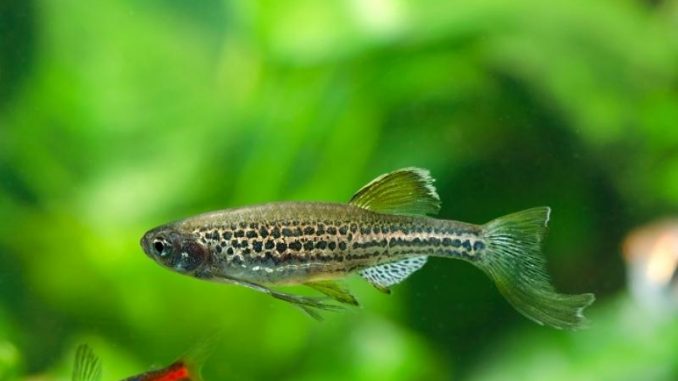
The leopard danio is a freshwater fish of the danio family. Leopard danios are a captive-bred variety of the zebra danio.
With golden bodies and blue-gray spots, leopard danios have a scale pattern that resembles leopard spots. The hardy leopard danios are ideal for beginner fishkeepers because they socialize well with other non-aggressive fish species.
TABLE OF CONTENTS
Leopard Danio Facts & Overview
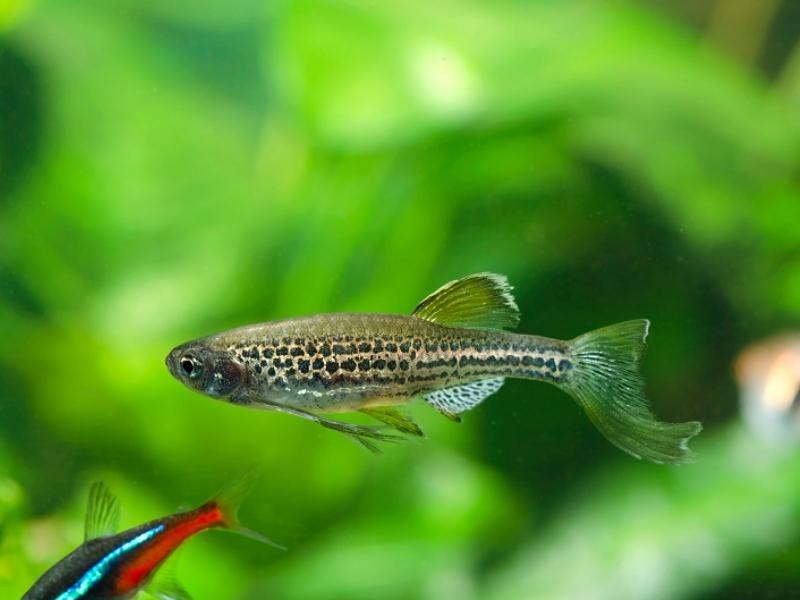
| Scientific name: | Danio rerio or Danio frankei |
| Common names | Spotted danio or longfin spotted danio |
| Distribution: | Spotted danio or longfin spotted danio |
| Size: | 2.25–2.5 inches |
| Life expectancy: | 3–4 years |
| Color: | Brown-gold color with blue-gray spots |
| Diet: | Omnivorous |
| Temperament: | Peaceful |
| Minimum tank size: | 10–20 gallons |
| Temperature: | 64–75°F (18–24°C) |
| pH: | 6.0–8.0 |
| Hardness: | 2–20 dGH |
| Care level: | Easy |
| Breeding: | Lays eggs that are fertilized externall |
Origin
The origin of leopard danios is a mystery. Some argue that the leopard danio came from India or Pakistan. Others say leopard danios were created in Czechoslovakia and are a new strain from the zebra danio.
Other aquarists that say the leopard danio was created from the dwarf danio or spotted danio.
George Cust, a British aquarist, has recently proven that the leopard danios are a hybrid fish with a higher genetic ratio of Danio frankei than Danio rerio.
Adult Size & Lifespan
Leopard danios grow to two and a quarter to two and a half inches as adults. The average lifespan of a leopard danio is three to four years, but may live five and a half years if they are cared for well.
Availability
The leopard danio is easily available in pet stores and online stores. The price for one leopard danio ranges from $1.99–$3.99. You can find the leopard danio at these online shops:
Appearance & Behavior
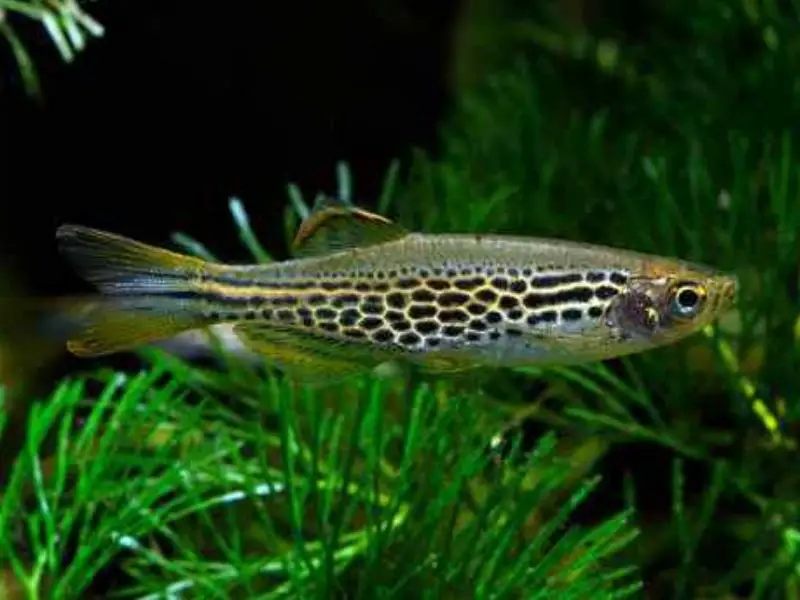
Leopard danios are peaceful fish that like to jump and swim. They have brown or gold bodies with gray spots.
Colors, Patterns, Fins, and Sex Differences
Leopard danios have a slender, compressed body shape that makes them fast, active swimmers in the tank. Female leopard danios have a more chubby body shape than the males.
The leopard danio’s body is golden-brown with blue-gray dots that extend to the fins. The body has a reflective quality that gives the leopard danio a metallic appearance when it swims close to the light at the top of the aquarium.
A leopard danio has a barbel on each side of its mouth. The longfin variety of the leopard danio has a long tail and long, flowing fins.
Typical Behavior
The leopard danio is a peaceful fish that gets along well with other fast-moving and non-aggressive fish.
Leopard danios are active, fast swimmers that spend most of their time in the middle and top strata of the tank, especially if there is a current or open space for them to swim.
Beginner aquarists often lose a few leopard danio when cleaning their tank as these fish like to jump, so keep your tank lid in place.
Leopard danios can be fed several times a day or once a day. If they are fed a few times, leopard danios should get enough food for what they can eat in three minutes. If fed only once per day, feed the leopard danios what they can consume in five minutes.
Leopard Danio Care & Tank Requirements
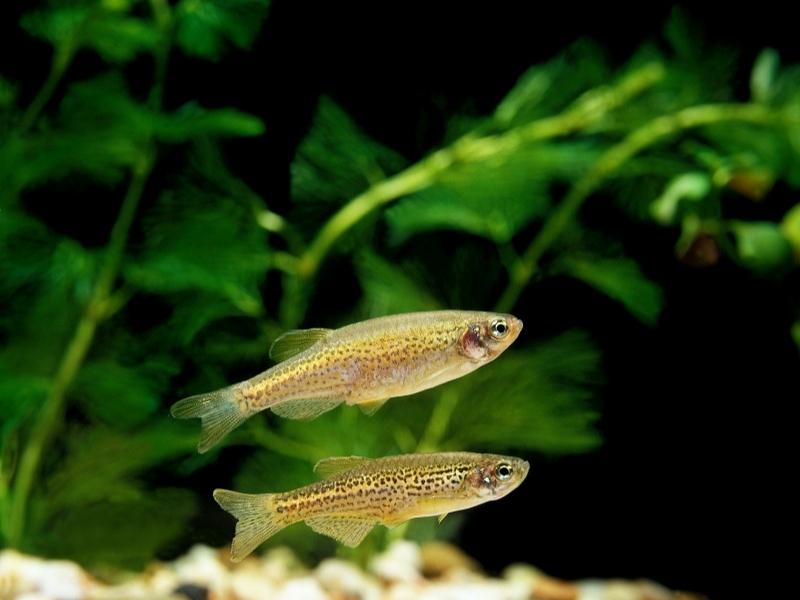
It is easy to care for leopard danios. Like zebra danios, leopard danios aren’t particular about the water conditions in their tank and can survive in an aquarium without a water heater.
The leopard danio likes to swim in medium- to fast-moving water, so create a water current in the tank with a water pump.
As omnivores, leopard danios eat a varied diet of flakes, live food, and vegetables.
Habitat and Tank Requirements
Because the leopard danio is part zebra danio, its ideal tank environment is similar to what’s required by zebra danios.
The leopard danio’s ancestor, the zebra danio, is native to India, Bangladesh, and Bhutan. Depending on the time of the year, zebra danios are found in many different habitats, from ponds, pools, and rice paddies, to rivers and streams.
The still water bodies where the zebra danios feed and spawn have silty sand and dense vegetation, while the fast-moving rivers and streams where they swim are clear, rocky, and shaded. Mimic this environment in the leopard danio’s tank.
Tank Conditions
Leopard danios easily adapt to most tank conditions provided the water is kept clean.
Replace 25%–50% of the aquarium water monthly, but if the tank is crowded, it is recommended to replace 20%–25% of the water weekly or every second week.
Use sand or a dark, fine gravel for the tank’s substrate and ensure the lighting is subdued. The tank needs good filtration.
Leopard danios thrive in a well-planted aquarium, especially where dense plants are located to the side and back.
There should be plenty of open water from the middle to the top of the tank so leopard danios have enough space to swim.
Set up your tank for the leopard danio according to these conditions:
| Water type: | Freshwater |
| Tank size: | Minimum 10 gallons, but 20 gallons is preferred |
| Water temperature: | 64–75ºF |
| Substrate: | Sand or dark, fine gravel |
| Tank setup: | Plants |
| Acidity: | 6.0–8.0 pH |
| Water hardness: | 2–20 dGH |
| Filter: | Yes, to help keep the tank’s water clean and remove debris, nitrates, and ammonia |
| Water movement: | Yes, to help keep the tank’s water clean and remove debris, nitrates, and ammonia |
| Lighting: | Subdued or moderate/normal lighting |
DiseaseWhile a school of leopard danios can be kept in a nano or small tank, they thrive in a 20-gallon aquarium where there’s plenty of space for these lively fish to swim.
Leopard danios are resilient, and if your tank is well-maintained, common fish diseases aren’t usually a problem.
Stressed fish are more disease-prone, but if the tank conditions mimic the fish’s natural habitat and they eat a well-balanced, varied diet, leopard danios will thrive.
New additions to the tank can introduce disease. If you add new substrate or plants, thoroughly clean these before placing them in the tank. Quarantine new fish for a few days before adding them to the aquarium.
Catching a disease outbreak – like fin rot or ich – early on means you only need to treat a few infected fish rather than all the fish in your tank.
The longfin leopard danio is most likely to suffer from fin rot.
Treatments for severe fin rot are antifungal medication or antibiotics, and ensuring the tank’s water is clean to prevent secondary infections.
The treatment for ich is to quarantine the infected fish and dose them with medication until they are well.
Tank Mates
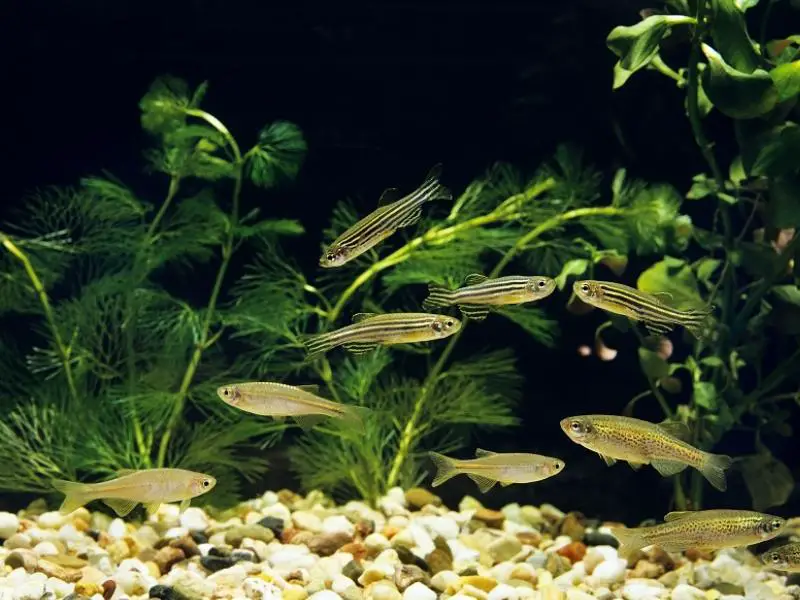
Leopard danios are happy to socialize with any other peaceful fish species, provided they don’t mind the lively temperament of the leopard danio.
Keep an eye on more aggressive tank mates and any fin nippers as the leopard danio’s small size makes them an easy meal. Leopard danios are best kept in a group of five or more.
Ideal tank mates for a leopard danio include:
- Other danios, like the zebra danio and celestial pearl danio
- Serpae, red eye, ember, cardinal, neon, and other tetras
- Platys
- Guppies
- Clown pleco
- Small barbs
- Swordtails
- Kuhli loach
- Cory catfish
- Harlequin rasbora
- Honey gourami
- Ghost shrimp
Avoid long-finned fish, very docile fish, aggressive or predatory fish, and large fish.
Diet and Feeding
The omnivorous leopard danios eat any food that floats on the surface. Feed leopard danios a balanced diet several times a day. They like to chase living or freeze-dried tubifex worms. Leopard danios also eat:
- Fish flakes
- Pellets
- Live prey like microworms
- Brine shrimp
- Small frozen food like daphnia, cyclops, and mosquito larvae
- Vegetables
Breeding
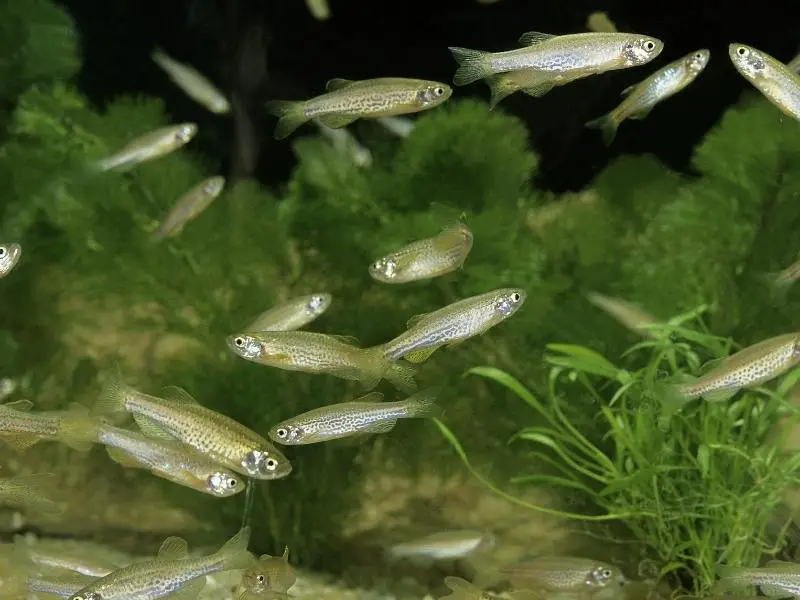
Breeding leopard danios is easy. Leopard danios form breeding pairs and often stay together for life.
To breed leopard danios, set up a breeding tank with 6-inch-deep water, and spawning mops, Java moss, or a two-inch layer of large glass marbles that are half an inch to an inch in diameter.
Add the female leopard danio to the tank for one day before adding the male. Raise the temperature of the water to 78°F once the male leopard danio is in the breeding tank.
The female leopard danio will release between 300 to 500 eggs that the male fertilizes. The eggs sink to the bottom of the breeding tank and the parent fish should be removed.
The fry hatch in two days. Feed the fries crushed dry food or prepared fry food with powdered eggs to promote growth.
Should You Get a Leopard Danio for Your Aquarium?
A shoal of leopard danios adds a metallic hue to a tank where similarly-sized, peaceful fish species are kept.
Beware of which tank mates are kept with leopard danios because the leopard danio may eat much smaller fish or harass fish that are too docile.
The hardy leopard danio is a great option for beginner and professional aquarists and fish keepers because they are easy to maintain.

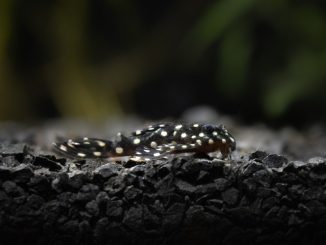
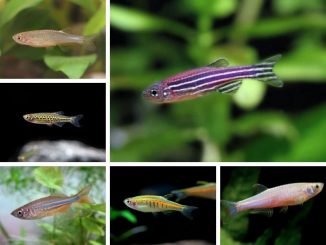
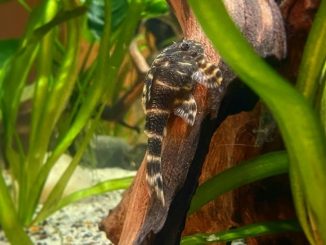
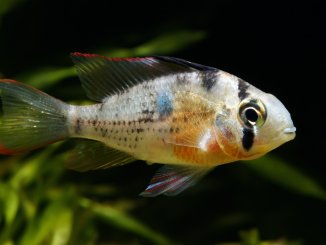
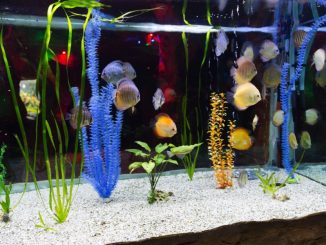
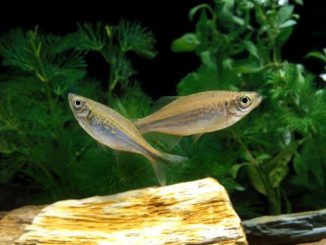
Be the first to comment